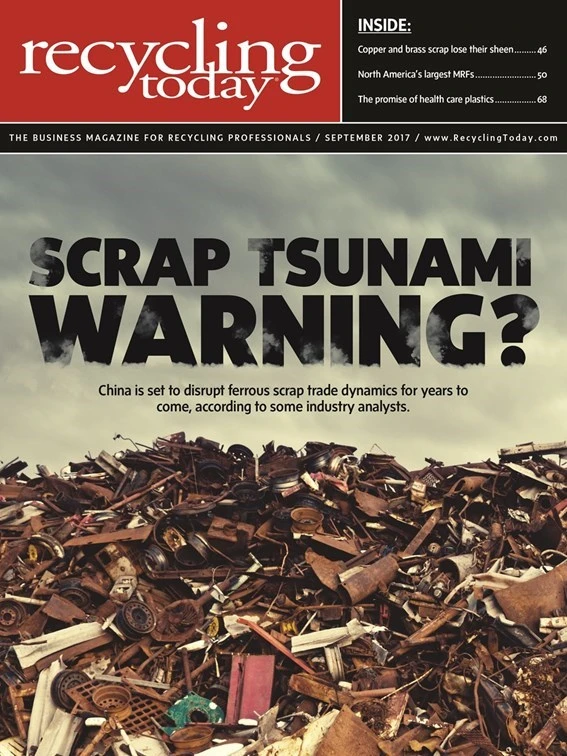
1. What sensor sorting technology is commonly being deployed on new installations or upgrades? Is this equipment replacing earlier technology or augmenting it?
Each sensor-based separator brand has its own technology, even though they are all based on the principle of induction sensors. Initially, sensor-based separators were mainly used for zurik and stainless steel where the pieces to identify were pretty large. Sensor technology has then evolved into always faster and more sensitive sensors that have allowed operators to go after small and thin pieces of metal, like copper wires. The latest generation of sensors allow recovery of metal pieces down to ¼ inch, including bare copper wires. Today, sensors are also more stable in the face of external elements such as temperature variations. I recommend to people using “old” generations of sensor-based separators dedicating them to recover midsize and large fraction zurik while using the latest generations for copper wire and smaller fractions. Depending on the generation of sensors, some might be replaced and upgraded by new sensor boards.
2. Where are sensor-based separators best placed for sorting metals from auto shredder residue (ASR)?
After the recovery of zorba by eddy current separators and after some air gravity separation to remove as much of the light, fuzzy non-metallic fraction as possible to achieve better preparation of the material going to the sensor-based separator.
3. What is the optimal size ratio for material when sorting with a sensor? Moisture content?

The optimal size is 3/4 inches to 1 ½ inches and 1 ½ inches to 4 inches with moisture content below 20 percent and certainly not over 25 percent.
4. What factors influence the performance of sensor-based recovery technology?
The proper liberation from fuzzy attachments of the metals arriving to the separator, especially for copper wires, and proper feeding of the material to the separator as far as the right quantity and even distribution on the total width of the separator.
5. What are sourcing agreements and how might recyclers benefit from such agreements with their sensor technology provider?
This is not a technical issue but a business model issue. The SGM approach is to shape its offering to what works best to the specific situation of a customer. For some customers, buying technology is what works best for them, and this corresponds with SGM’s primary business model. Some customers may not want to invest in the technology or prefer to concentrate their time on other aspects of their business, like optimizing sourcing feedstock to their shredder and/or selling metals. Such customers may welcome a sourcing agreement where SGM provides, finances and operates its technology to process the customer’s material based on a profit-sharing formula. The sourcing agreement specifies a certain duration or minimum tonnage of material to process and an option for the customer to buy SGM out of the deal. SGM only offers such sourcing deals upon invitation and request by customers.

Explore the September 2017 Issue
Check out more from this issue and find your next story to read.
Latest from Recycling Today
- Athens Services terminates contract with San Marino, California
- Partners develop specialty response vehicles for LIB fires
- Sonoco cites OCC shortage for price hike in Europe
- British Steel mill’s future up in the air
- Tomra applies GAINnext AI technology to upgrade wrought aluminum scrap
- Redwood Materials partners with Isuzu Commercial Truck
- The push for more supply
- ReMA PSI Chapter adds 7 members





